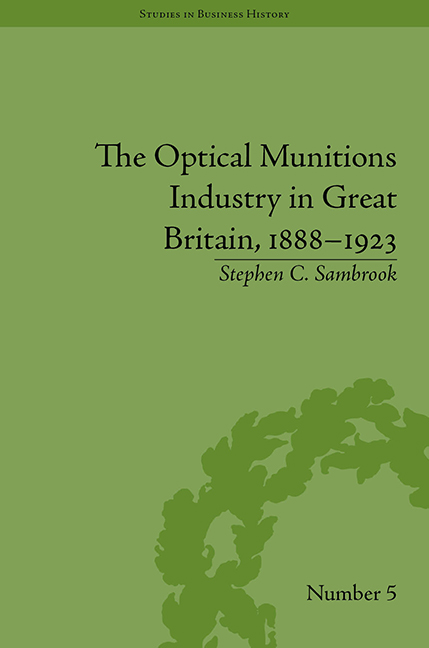Book contents
- Frontmatter
- CONTENTS
- Preface and Acknowledgements
- List of Figures and Tables
- List of Technical Terms
- Introduction
- 1 The Emergence of the Industry, 1888–99
- 2 The Growth in Importance from the Boer War to 1906
- 3 Expansion and Consolidation, 1907–14
- 4 The Impact of War, August 1914 to mid-1915
- 5 Industrial Mobilization: The Ministry of Munitions and its Relationship with the Industry
- 6 The Industry's Wartime, 1915–18
- 7 Industrial Demobilization and Implosion, 1919
- 8 Adaption and Survival, 1919–23
- Conclusion
- Notes
- Works Cited
- Index
6 - The Industry's Wartime, 1915–18
- Frontmatter
- CONTENTS
- Preface and Acknowledgements
- List of Figures and Tables
- List of Technical Terms
- Introduction
- 1 The Emergence of the Industry, 1888–99
- 2 The Growth in Importance from the Boer War to 1906
- 3 Expansion and Consolidation, 1907–14
- 4 The Impact of War, August 1914 to mid-1915
- 5 Industrial Mobilization: The Ministry of Munitions and its Relationship with the Industry
- 6 The Industry's Wartime, 1915–18
- 7 Industrial Demobilization and Implosion, 1919
- 8 Adaption and Survival, 1919–23
- Conclusion
- Notes
- Works Cited
- Index
Summary
War is the ultimate test of munitions supply. If a country's armed forces have inadequate quantities of munitions, or if they are significantly inferior to the enemy's, then the possibility of defeat increasingly becomes a threat. Even the greatest of command skills, determination and courage can be negated by the lack of the necessary equipment for the effective prosecution of war. In evaluating the success of munitions supply it might reasonably be supposed that the principal, perhaps the only, criterion of success is whether sufficient quantities of what was needed to ensure victory were indeed provided. But success in tests comes at different levels and assessing the degree attained by the optical munitions industry after mid-1915 is not one which can be measured by the simple yardstick of whether the armed forces received an adequate number of whatever instruments they needed. Equally important is to understand how it went about meeting the tasks imposed on it by the exigencies of war and, in particular, its relationship with the state in the form of the Ministry of Munitions’ Optical Munitions and Glassware Department (OMGD). Because that body was inextricably linked to the industry from mid-1915, both must be considered together.
A convenient route towards understanding the evolution of the industry between then and the end of the war is to look at the processes by which the OMGD went about securing adequate output from the industry in what have been called ‘individual optical technologies’, and examining how each progressed in the context of wartime conditions.
- Type
- Chapter
- Information
- The Optical Munitions Industry in Great Britain, 1888–1923 , pp. 133 - 158Publisher: Pickering & ChattoFirst published in: 2014



